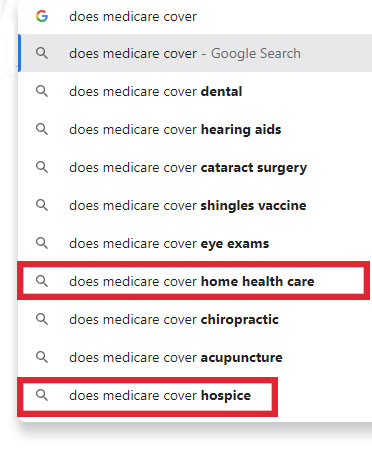
Long-term care is a problem clients don’t want to talk about. We have to keep trying until we find the idea that breaks through that resistance.
We’ve all seen the statistics on how likely we are to need long-term care. Most clients brush them aside, thinking, “That won’t be me” or “I’ll deal with this later.”
The good news is that consumers are paying more attention. In 2021, concern about paying for long-term care rose to 37%, up from 25% in 2019 (LIMRA). The pandemic was a likely cause, drawing our clients’ attention to long Covid and healthcare issues in general.
But only about 21% of retirees have the resources to handle 5 years of care needs – whether through income, assets, or help from family caregivers. About 36% couldn’t even cover a single year. (Source: Americans Worry about the Wrong Retirement Risks)
But if statistics that prove need don’t convince them, how else can we break through that wall of resistance? If we had a foolproof answer, we’d give it to you. But there isn’t one.
As agents, the best we can do is to try different approaches, use different stats, and share different stories until something strikes a chord. Nothing may sink in until a client sees a friend or family member go through a long-term care struggle. But once that lightbulb moment happens, you need to be on their radar, talking about solutions. They need to know you can help.
If you haven’t talked about LTC with clients or on social media in awhile, here are a few ideas to bring up.
No time to read? Watch our video overview:
Consumer Action Item #1: Don’t wait until age 65 – your chances of a decline increase dramatically.
Make sure your clients know that long-term care insurance isn’t something they’ll automatically qualify for, like Medicare. In fact, the longer they wait, the less likely they’ll get it. Jesse Stome, director of the American Association for Long-Term Care Insurance (AALTCI), has an interesting take on this concept: “Your money pays for long-term care insurance, but it’s your health that really buys it.”
Here are some eye-opening stats from AALTCI:
- Over 47% of people who apply for stand-alone LTC coverage after age 70 are declined.
- Over 38% of people who apply for LTC coverage between ages 65-69 are declined.
This happens for a couple reasons.
First, health problems naturally crop up with age. You can’t fight this or change this, so your client’s only recourse is to buy when they’re healthy.
Second, once clients qualify for Medicare, many see a doctor more regularly than before. Of course, this increases the chance that a doctor will find a problem and document it on your client's health record – which could lead to problems qualifying for long-term care insurance later.
Consumer Action Item #2: The longer you wait, the more you’ll pay.
Every few years, Milliman surveys long-term care companies to analyze trends. The 2022 survey highlighted an unsurprising trend.
Since the last survey in 2016, 19 of 20 LTC companies raised their rates. Of the 19 companies that raised rates, 18 accounted for 35 recent increases. The average rate increase was 29%.
When it comes to long-term care, it's clear that waiting means paying more. Your clients already understand this concept, but they’ve probably never applied it to long-term care.
So here are a few teasers to get clients to think about this another way:
- If you knew the cost of the new car you want would go up 29% next year, would you buy it now to save money? What if it would cost 60% more in 5 years? When would you buy?
- Do you carry more than the legal minimum for car insurance?
- Be honest: did you buy more toilet paper than you needed during the pandemic?
- Do you have a go-bag in case of a weather emergency, like a wildfire, earthquake, tornado, flood, or hurricane?
These questions are designed to get people thinking about preparation and cost savings.
If they’ve taken other actions to save money or get supplies before they needed them, they’ve proven they can take action. They want to be prepared.
Consumer Action Item #3: Medicare does not cover long-term care.
Check out these Google suggested searches for “does medicare cover”:

Many of your clients don’t understand what Medicare does and does not cover. This is especially true for clients too young for Medicare – say, age 45-60. But that’s exactly the time they should be making their plans for long-term care. And the earlier they’re aware of what Medicare doesn’t cover, the more time they have to think and plan on their own.
FYI: Medicare will only pay for therapy or rehabilitation costs – it will not pay for assistance with ADLs (activities of daily living, such as bathing, eating, and dressing).
7 Long-Term Care Sales Ideas
Okay, so we’ve covered a few ideas for bringing up the subject with your clients and prospects. Here’s how to take general awareness to the next level.
1. Recommend clients get covered before they go on Medicare.
Using the questions shown in the Google query above, you can create social posts to tell people about things Medicare doesn’t cover. This reinforces the need for people to plan, and keeps you top of mind.
2. Approach clients and prospects who don’t have kids.
Who can they rely on for help when they’re older? True, extended family may be willing to help. But wouldn't that be a much easier conversation to have when you can offer cash from the informal care benefit offered by some LTC riders?
Alternatively, if they already have informal arrangements with family, they may be good candidates for life insurance with an LTC rider. That way, they have the death benefit to draw from for LTC coverage if they need it. If they don’t, the family members who would have cared for them could be the beneficiaries.
3. Approach clients and prospects who do have kids.
Financial issues, emotional issues – there’s a lot at stake here. Clients who don’t want to burden their kids may be especially interested in a policy that takes the strain off their caregiving children. And clients who do expect their kids to help out may want to leave them a death benefit as a last thank-you. Either way, the death benefit creates a pool of money with multiple uses based on their needs and wishes. It's a way to make the entire process as smooth as possible for everyone involved.
4. Tell them about life insurance policies with LTC riders.
According to a 2021 LIMRA study, 6 in 10 Americans would consider buying a policy with a long-term care component. This is the go-to solution for clients who are worried they won’t need LTC or that it’s too expensive. If they don’t need care, great – they didn’t pay for anything they didn’t use. If they do, they can dip into the death benefit or the policy’s cash value as needed. No-exam policies can make the application process as quick and painless as possible.
Need help finding carriers or selecting the right product?
Let us help! Our Brokerage Managers - Dave, Joshua, and David - can help you figure out which carrier is the best fit for your clients. Call 800-823-4852 and ask for a brokerage manager, or click the button below to email us!
5. Tell them about linked policies.
Linked policies don’t use a rider to provide LTC coverage. Instead, there are separate life insurance and long-term care policies that are each linked to the same premium payment. In most cases, their LTC benefits are a 5x multiple of the premium paid. If they're fairly certain they'll need that LTC coverage, this is a way to get the best of both worlds.
6. Tell them about annuities.
Annuities make retirement income more consistent so they can plan for everything from living expenses to long-term care. This is the go-to solution for clients who don’t think they’ll live long enough to need LTC. The statistics say they will – and could outlive their retirement funds as a result. They'll still likely need an LTC solution, but if you can get them on board with an annuity, you have a starting point. Next, work with them on a potential retirement budget and see where anticipated LTC expenses fit in. The numbers in #7 below may help.
7. Do the math for them.
Current median monthly costs for care options range from about $5,000 to $9,000. Those prices vary depending on whether they opt for in-home care, adult day care, assisted living, or a nursing home. So let’s take a crack at a low-end and high-end scenario:
Low-End: LTC for a disability lasts an average of 2 years. (Source: Altarum)
24 months (2 years) x $5,000 (the lowest average monthly care cost from the survey) = $120,000
High-End: LTC for more serious needs lasts an average of 3.7 years for women and 2.2 years for men. (Source: ACL.gov)
Women: 44 months (3.7 years) x $9,000 (the highest avg. monthly care cost) = $396,000
Men: 26 months (2.2 years) x $9,000 (the highest avg. monthly care cost) = $234,000
What do you do with these numbers?
Let’s say a childless couple is worried about long-term care but doesn’t want to commit to a policy in case they don’t need it. They could buy life insurance policies with a face amount high enough to cover estimated LTC costs. They would then have the option to select their surviving spouse, a relative, or even a charity as a beneficiary if they didn’t have LTC needs. No matter what, they’re protected against average LTC costs and can leave a legacy.
That's our look at 3 good reasons for clients to act when it comes to long-term care!
Do any of the stats surprise you? In your experience, what motivates a client to take action and make a plan for long-term care? Tell us in the comments!
